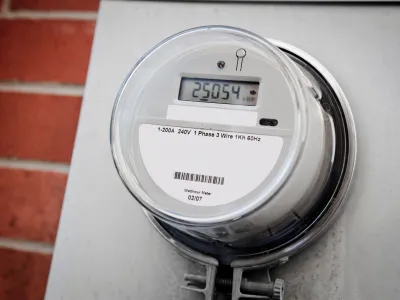Advanced Meters: PUC takes steps to ensure Xcel customers receive benefits and are protected from high costs

Xcel’s electric rate case is not the only reason the company’s customers will see their electric bills increase. Recently, the Public Utilities Commission (PUC) heard a petition from Xcel to recover the costs associated with installing advanced meters. While these meters can provide customers with significant benefits, they are expensive. Cost recovery for these projects will increase typical residential customers' monthly bills by $3.95 starting on August 1, 2023. In a joint filing with the Department of Commerce and the Office of the Attorney General (OAG), CUB argued for ratepayer protections that will shield Xcel customers from cost overruns and ensure they receive the promised benefits of the meters. We are happy to announce that the PUC agreed with us and has begun a process for implementing those measures.
Xcel’s Advanced Metering Infrastructure (AMI) is made up of a system of “advanced” or “smart” meters and communication networks that allows two-way communication between the utility and the meters located at customers’ residences. At the most basic level, AMI serves the same essential function as normal electric meters – they measure the amount of electricity a household uses. But, unlike traditional meters, AMI provides a vast amount of additional data that can be used by customers and the utility to better regulate energy usage and improve the electric grid. For example, AMI will allow customers to see their energy consumption data; connected applications can provide information on how to conserve energy and reduce monthly bills. The meters will also allow the company to more precisely locate electricity outages, remotely activate electric service, and proactively detect and fix loose connections. These and other benefits led Xcel and the PUC to conclude advanced meters are a worthwhile investment.
These benefits do not come cheaply. Xcel has estimated that the meters, together with the network to operate them, will cost approximately $560 million. In other words, these investments cost as much as a rate case by themselves. Over the past four years, CUB has argued that the PUC must take action to keep these costs under control and make sure benefits and cost savings are promptly passed onto customers. In its May 4th hearing on the matter, the PUC set cost caps on how much Xcel can recover, ordered the company to pass cost savings onto customers, and required tracking of extensive performance metrics on which cost recovery will be based. As explained below, this decision by the PUC is a major step in the right direction.
Cost Caps
Because advanced metering infrastructure is expensive, it is important that Xcel be held to its cost estimates and take every possible effort to limit cost overruns. By establishing an upper limit on the budgeted amounts through “soft” cost caps, the company is prevented from recovering expenditures above its cost estimates unless it shows by clear and convincing evidence that the extra expenses were reasonable, prudent, and beyond the company’s control. This helps to provide a clearer picture of the overall costs associated with the project and prevents unnecessary costs from being passed on to ratepayers.
Cost Savings
As discussed above, Xcel determined advanced meters would bring numerous benefits to customers that would outweigh project costs. However, because AMI is a new and evolving technology, the full extent of the meters’ capabilities is not yet known. Consistent with the recommendations of CUB, the Department, and the OAG, the Commission required any savings or revenues generated by the meters to be passed back to customers through an annual true-up process that balances estimated and actual costs. In practice, this means that any revenues or savings created by advanced meters will offset how much customers owe for the project.
Performance Incentive Mechanisms and Metrics
When Xcel originally proposed its advanced metering project, the Commission determined that all future cost recovery would be based on the company meeting Commission-approved metrics and performance measures. The Commission affirmed this position in its most recent decision by requiring the further development of performance mechanisms on which cost recovery will be based. As part of this requirement, Xcel will be required to provide several years’ worth of historical data from which baselines can be established for a variety of variables. From there, performance targets—as well as penalties and incentives for meeting (or failing to meet) those targets—will be selected and implemented. Xcel’s performance will be measured on an ongoing basis through annual reporting requirements.
Conclusion
The Commission’s decision to cap recoverable costs, pass benefits onto customers, and make cost recovery contingent on meeting targeted performance measures sends a strong message that ratepayers’ interests must be protected. CUB will continue to play an active role in ensuring customers realize the benefits associated with advanced meters and that project costs are minimized to the extent possible.